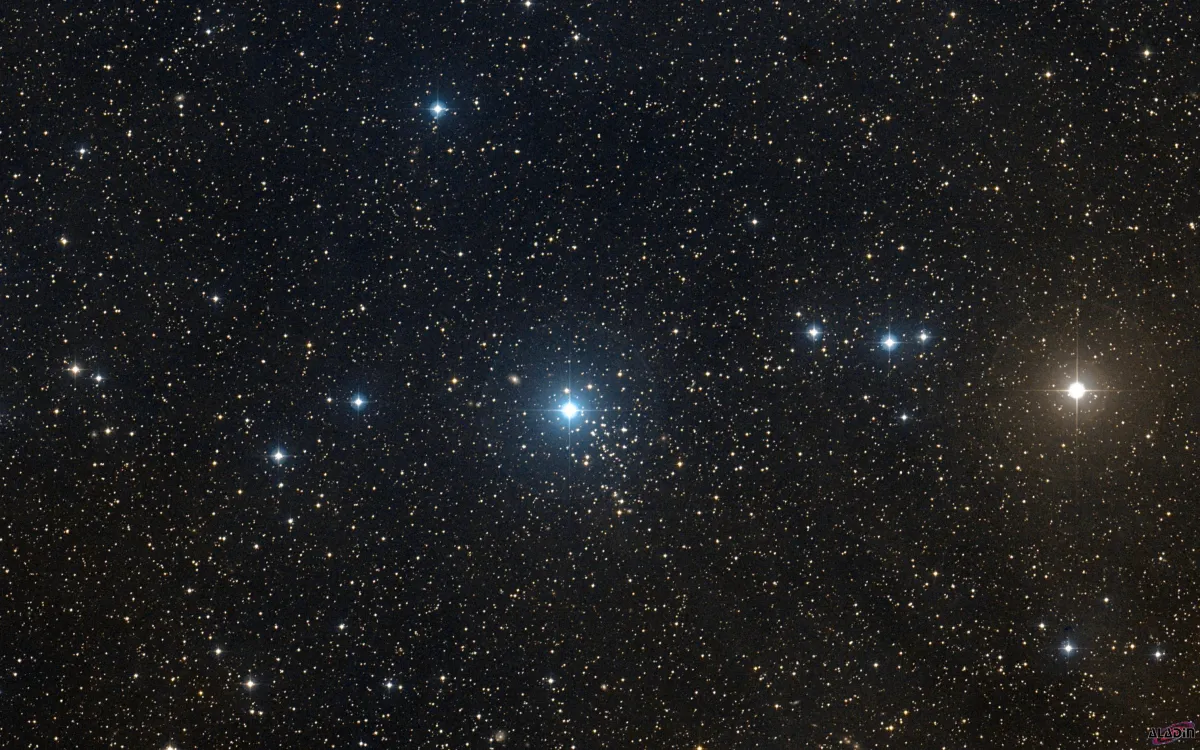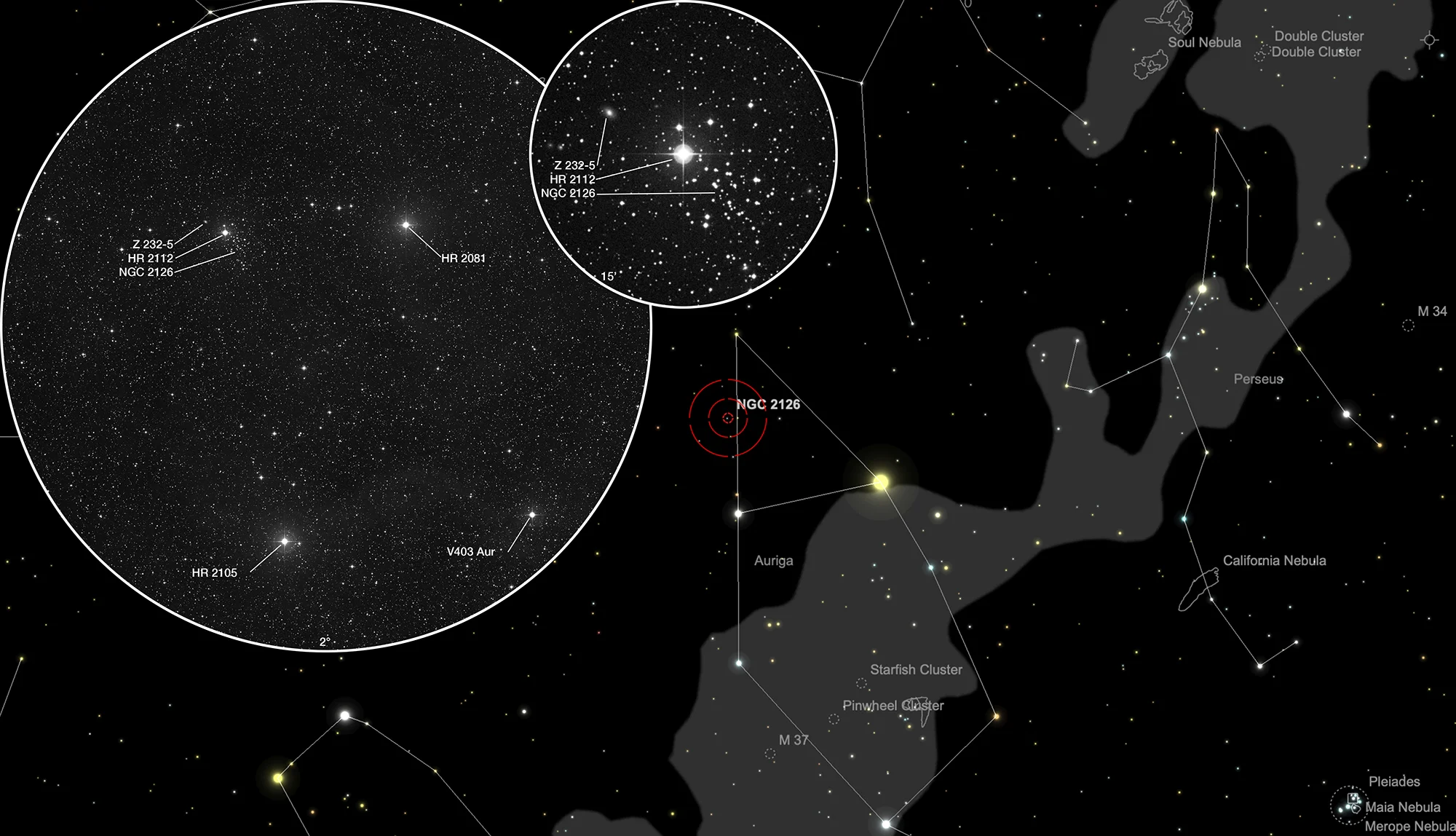Open Cluster NGC 2126

NGC 2126
This open cluster was discovered on 12 November 1787 by German-British astronomer William Herschel. He was sweeping the sky with his 18.7-inch speculum reflector of 20 feet focal length in Slough. He listed the cluster as VIII 68 and noted: «A small cluster of scattered stars, not rich, one 7th mag towards the north, but this does not seem connected with the cluster.» [464]
| Designation | NGC 2126 |
| Type | OCL (II1p) |
| Right Ascension (J2000.0) | 06h 02m 32.9s |
| Declination (J2000.0) | +49° 51' 57" |
| Diameter | 6 arcmin |
| Visual magnitude | 10.2 mag |
| Metric Distance | 1.200 kpc |
| Dreyer Description | Cl, not Ri, * 7 m north |
| Identification, Remarks | WH VIII 68; GC 1323; OCL 418 |
Galaxy Zwicky 232-5
From our perspective, the small galaxy Zwicky 232-5 lies just seven arcminutes east of NGC 2126 and has an apparent magnitude of about 15.4.
| Name | Z 232-5 |
| Object Type | AG? |
| Right Ascension (J2000.0) | 06h 03m 11s |
| Declination (J2000.0) | +49° 56' 22" |
| Radial velocity | 5609 km/s |
| Redshift z | 0.01889 |
| Angular size | 0.65' × 0.507' |
| Magnitudes | B 15.5; G 19.342958; J 11.535; H 10.706; K 10.476 |
| Identifiers | 2MASX J06031103+4956224; Gaia DR2 970358701307022336; Gaia DR3 970358701307739008; LEDA 18335; NPM1G +49.0042; UZC J060311.0+495621; Z 0559.2+4955; Z 232-5 |
Finder Chart
The open cluster cluster NGC 2126 can be found in the constellation Auriga. On 23 December it in opposition with the Sun and is therefore highest in the sky at local midnight.
